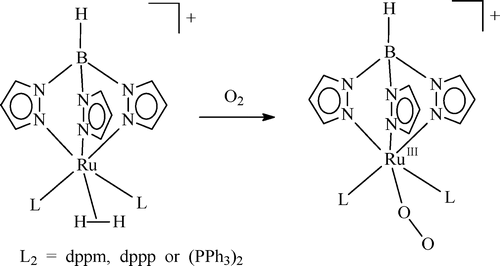Reactions of [Cp*Ru(H2O)(NBD)](+) with dihydrogen, silanes, olefins, alkynes, and allenes
Submitted by Jun Zhu on Thu, 10/31/2013 - 23:44
Formal [2+2+2] addition reactions of the NBD ligand in [Cp*Ru(H2O)(NBD)]BF4 (NBD = norbornadiene) with H-2, Ph3SiH, ArCH=C=CH2, and RC=-CPh were observed. In contrast, olefins such as styrene and NBD do not undergo similar [2+2+2] addition reactions with [Cp*Ru(H2O)(NBD)]BF4. [Cp*Ru(H2O)(NBD)]BF4 reacts with H-2 in benzene to give [Cp*Ru(eta(6)-C6H6)]BF4 and nortricyclene. Similarly, [Cp*Ru(H2O)(NBD)]BF4 reacts with Ph3SiH to give [Cp*Ru(eta(6)-C6H5SiPh2OH)]BF4 and nortricyclene.

